The disappeared of the July Uprising
Seven months after the July uprising in Bangladesh, many protesters still remain missing. We investigated 31 cases: six were buried as unclaimed bodies at Rayerbazar graveyard; four were identified by families from among the charred bodies in Ashulia; two were handed over to families after DNA testing; and 19 are still unaccounted for. We found evidence of systematic government efforts to cover up medical records and bodies of the victims so they can never be found again. This four-part series also documents how families were denied time to collect the corpses from hospital morgues, and how they are now waiting for the bodies of their loved ones.
Part- 1
Hastily buried in unmarked graves
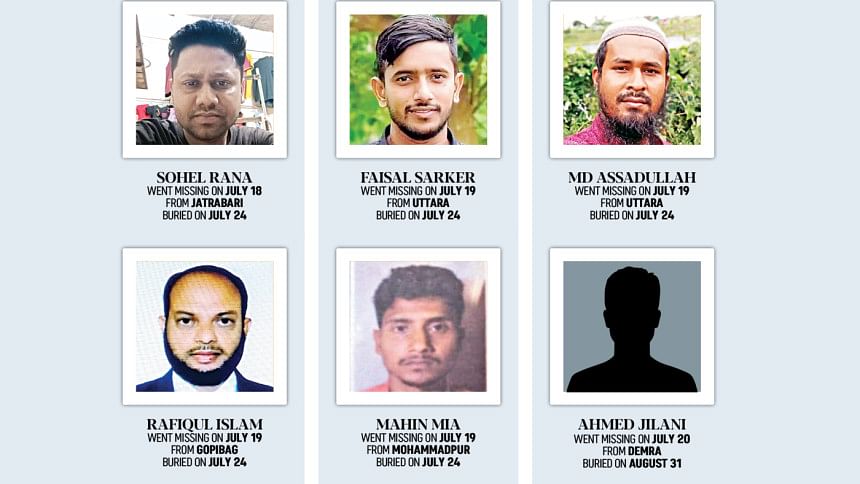
On July 18, 2024, two days after Abu Sayed's killing in Rangpur, Sohel Rana stepped out of his home in Dhaka's Jatrabari around 6:00pm to join the quota reform movement. He told his mother he would be back soon, but he never did.
Around an hour after he joined the protest in Jatrabari area, police detained Sohel, 28, tortured him, and then shot him several times, four fellow protesters and a person who admitted him to Dhaka Medical College Hospital told The Daily Star. His inquest report, prepared by Shahbagh police, confirms he had multiple pellet wounds on both sides of his chest and bruises on different parts of his body.
Faisal Sarker, 18, a college student who also worked as a supervisor of a bus company, left home for work at Abdullahpur bus stand in Uttara on July 19. By the time he got out, the crackdown on the streets was getting worse.
"The night he disappeared, we kept our front door open, thinking he would come home at any moment. My son never came home. Now I cannot even find his grave."

He called his mother to tell her that he was coming home, in Cumilla, to stay with her until the situation stabilised. His family last heard of him when he was crossing Uttara to get a bus. He then vanished.
The same day in Uttara, Md Assadullah, a driver and a father of two, was shot by Awami League-affiliated helmeted assailants, according to CCTV camera footage and multiple still images verified by The Daily Star.
Sohel, Faisal and Assadullah never knew each other in life. But their fates converged in death.

Their bodies, along with many others, ended up at Dhaka Medical College morgue. Unidentified, unclaimed.
A nationwide curfew, intended to quash the movement, kept their families from finding them, and the six were hurriedly buried in unmarked graves at Rayerbazar before their relatives could collect their bodies, an investigation by The Daily Star has found.
Meanwhile, at least 19 more families we spoke to continue searching for their fathers, sons, brothers or husbands whom they lost during the July uprising. But they don't know if they will ever find them as there are hardly any efforts from the government to resolve the mystery of these missing men.
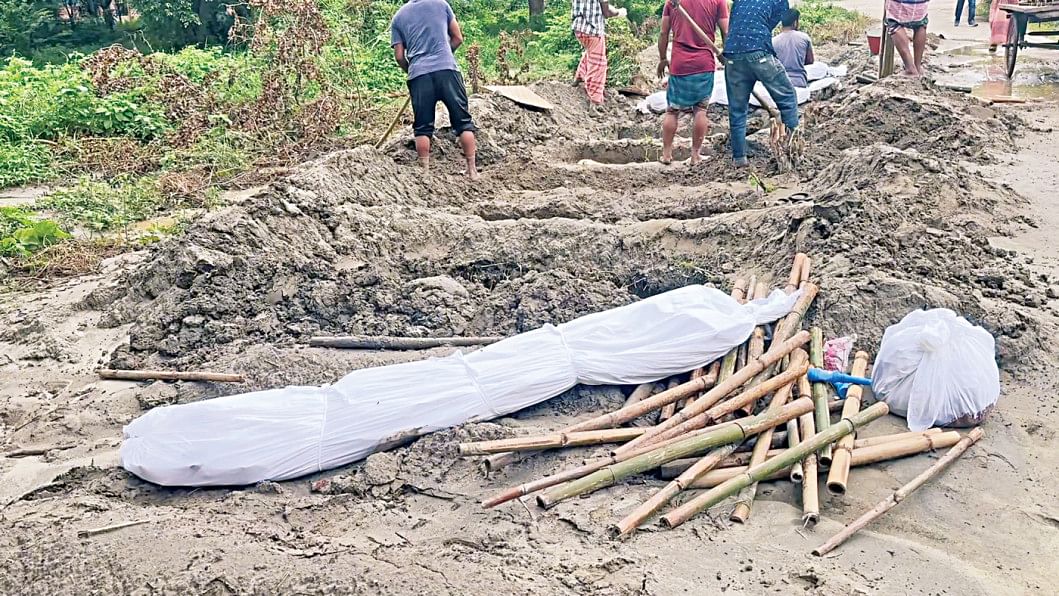
At least 12 of these 19 people went missing on August 4 and 5 from Dhaka, Savar, Gazipur, Sirajganj, Panchagarh and Bogura amid clashes and police firing.
The fact-finding report by the UN Office of the High Commissioner for Human Rights (OHCHR) cited senior security officials' testimony, saying deposed prime minister Sheikh Hasina herself ordered security forces to "arrest the ringleaders of the protests, the troublemakers, kill them and hide their bodies."
However, there is no official account yet of how many bodies were actually hidden by the state apparatus.
The Daily Star investigated 31 cases of unclaimed or missing bodies, but evidence suggests that the actual number is higher.
Over the last two months, we have pieced together hospital records and police inquest reports as well as records from Anjuman Mufidul Islam, a charity for burial service, and Rayerbazar graveyard, and found evidence of deliberate attempts by state forces to kill protesters and hide their bodies.
THE UNMARKED GRAVES
Anjuman Mufidul Islam is the only burial service in the country that handles unclaimed bodies. We reviewed its register and found that the charity buried 515 bodies from January to November 2024, an average of 47 bodies per month.
"We last heard of him when he said he was crossing Uttara to board a bus. There were sounds of gunfire. Since then, his phone has been switched off."

However, the body count jumped after the middle of July. Only in the last 10 days of that month, when police, Rab, BGB, Ansar and armed forces members were called in to tackle the protesters, Anjuman sent 45 bodies for burial in the Rayerbazar graveyard, just two less than its monthly average.
Anjuman's register shows it did not send a single body for burial from August 1 to 11, despite an intensified crackdown between August 2 and 5. But in the remaining 20 days, it buried 34 bodies.
We went to see the burial sites at Rayerbazar on January 29. Block 4 of the cemetery contained 114 graves without names or any other identifiable markings. Grave staffers said many were victims of the July uprising, but could not give a figure.
Analysing Rayerbazar's register, we found that 27 bodies buried in July and 13 in August had dates of death between July 17 and August 5, the final and the deadliest three weeks of Sheikh Hasina's 15-year authoritarian rule, when hundreds were killed and thousands injured by state forces.
In addition to Sohel, Faisal and Assadullah, at least three more protesters – Rafiqul Islam, Mahin Mia, and Ahmed Jilani – now lie in Rayerbazar as unidentified bodies, The Daily Star can confirm.
Photos of their bodies are still on display on a wall of Anjuman among the 114 buried in July-August.
Of the 114, at least 40 died between July 17 and August 5 and the rest 74 before and after that period. Based on the dates of death of the 40, it is likely that many of them were victims of the July massacre.
All the six July uprising victims that we have been able to identify went missing between July 18 and 20 in and around the protest hotspots—Jatrabari, Shonir Akhra, Uttara, and Mohammadpur, witnesses and family members said.
Except Jilani, who was killed on August 3 and laid to rest on August 31, the rest were buried in July, within days of their deaths. Apart from Mahin, who went missing from Mohammadpur and taken to Suhrawardy Medical College Hospital, the other five were brought to DMCH.
When we met Sohel Rana's mother Rasheda Begum at her Jatrabari house in January, she clutched a picture of her son to her chest and wept.
"The night he disappeared, we kept our front door open, thinking he would come home at any moment. My son never came home. Now I cannot even find where among the 114 graves lies my son."
Part- 2
AL govt sought to hide true extent of massacre
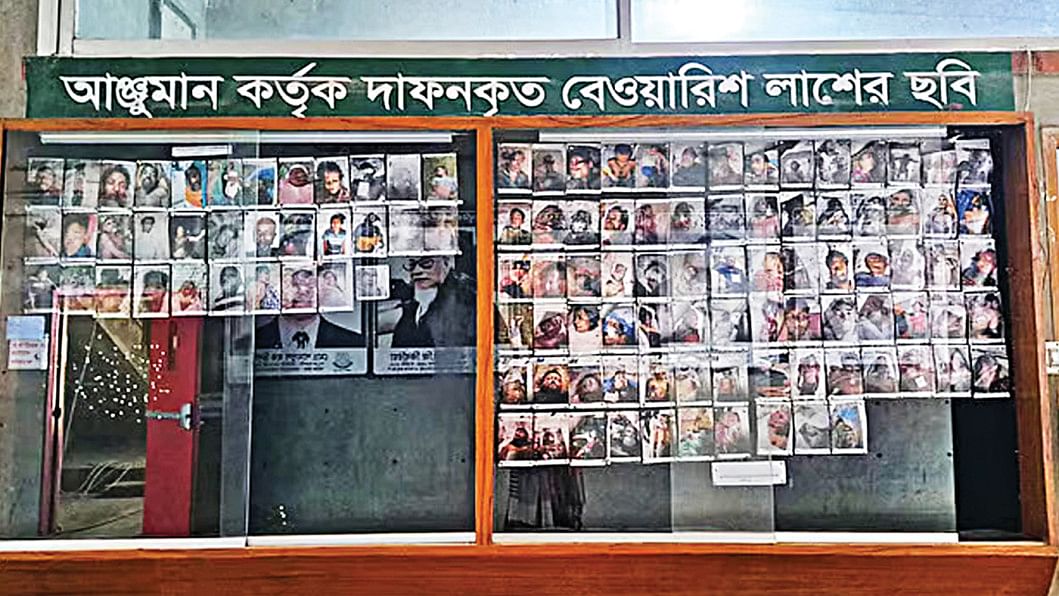
They all had families, desperately searching for them amid a nationwide curfew and internet shutdown at the height of the July uprising. Yet, they were buried as "unclaimed" bodies within one to six days after being shot dead, before their loved ones could find them. Seven months after the July killings, these families do not know where their kin rest.
An investigation by The Daily Star indicates that the hasty burials of the victims were part of a systematic effort by the fallen Awami League government to conceal the true extent of the massacre.
In some cases, medical records were tampered with and standard protocols for handling unclaimed bodies were bypassed. In other cases, the police quickly disposed of the bodies even though hospital morgues had the capacity to keep them longer, according to documents and morgue sources.
For example, Dhaka Medical College Hospital has two morgues with a combined capacity to hold around 100 bodies.
Before July 15, when killings of the protesters had not yet begun, there were 28 bodies in its mortuaries, said Ramu Chandra Das, a morgue assistant.
Yet, general diaries from Shahbagh police and registers at DMCH morgue and Anjuman Mufidul Islam, a burial service, show that eight protesters were buried on July 24 as "unclaimed" bodies in Rayerbazar graveyard within one to six days of their deaths.
These eight bodies include Sohel Rana, Md Assadullah, Faisal Sarker and Rafiqul Islam, who were killed by gunshots (Read their story in Part 1 of this series). The identities of the rest four remain unknown.
Asked why they got rid of these bodies so fast, Ramu said, "It was done on police instructions. We could have kept the bodies longer."
Typically, DMCH reports about unclaimed bodies to police about a week after the bodies are brought to the hospital. Upon completion of various official processes, including autopsies, burial of such corpses takes about a month or even more.
"We could've kept the body longer; there were ample empty freezers. But the police took away the body."
"We usually keep unclaimed bodies for at least a week in the morgue. Many bodies are also kept for months or even years," Ramu said.
Documentary evidence also suggests that DMCH does keep unclaimed bodies longer.
For instance, on July 8, 2024, a week before state forces began to kill protesters, Anjuman Mufidul sent seven bodies, all from DMCH, to Rayerbazar for burial. Records show they died between June 12 and July 4. This means, before these bodies were sent to Anjuman, six of the bodies were kept at mortuaries for about three weeks or more.
In contrast, Anjuman received eight bodies on July 24, by which time the number of corpses at hospitals was rising every day. Records show that four of these eight died just the previous day, and the four others the day before.
This suggests a systematic effort to erase evidence and prevent families from finding their loved ones.
According to the eight general diaries filed by Sub-inspector Jabbar from Shahbagh Police Station in relation to these bodies, six were from Jatrabari, and two from Uttara. All died from gunshot wounds, the GDs show.
Usually, Anjuman receives unclaimed bodies from hospitals after autopsies in the presence of police officers who facilitate the process. Before the handover of the bodies, representatives from Anjuman and a police officer are required to sign the morgue register.
"I just followed orders from Shahbagh's then officer-in-charge Mostajizur Rahman."
However, this protocol was not followed in the case of at least nine bodies connected to the uprising.
Sub-inspector Salahuddin of Shahbagh police collected eight of these bodies from Dhaka Medical, and Sub-inspector Shakil Joarder of Sher-e-Bangla Nagar police collected another body from Suhrawardy Medical.
In both instances, Anjuman received the bodies from the respective police stations rather than directly from the hospitals, documents show.
Asked why he rushed the burial of these individuals, Shahbagh police Constable Salauddin said he just followed orders from Shahbagh's then officer-in-charge Mostajizur Rahman. Two other police officers gave a similar version. Mostajizur could not be reached for comments.
Both the DMCH authorities and Salauddin claimed that no other bodies related to the protests were sent to Anjuman.

Medical Records Tampered
Apart from DMCH, two other hospitals in Dhaka store unclaimed bodies—Shaheed Suhrawardy Medical College and Sir Salimullah Medical College (Mitford Hospital).
Both hospitals claim they haven't dealt with any protest-related unclaimed bodies.
Our findings about Suhrawardy Medical contradict this. (We did not investigate Mitford hospital's claim.)
Mahin Mia, one of the six confirmed by The Daily Star to have been buried at Rayerbazar as unclaimed bodies, protested on July 19 at Mohammadpur's Town Hall with his brother, Abdul Jabbar. Jabbar returned home, but Mahin did not.
Jabbar later found Mahin's picture among the deceased on Anjuman's "wall of the dead".
Mahin's wife gave birth to their first child 15 days after he disappeared.
The Daily Star found Mahin's autopsy report (autopsy # 679/24) from Suhrawardy Medical College. The report describes him as "unidentified" and says he was found on July 19, the day he went missing, with bullet wounds on both sides of his head.
His family later confirmed his identity from the photo on the autopsy report.
Suhrawardy Medical's morgue records show that Mahin's autopsy was done on July 20, and his body was handed over to Sher-e-Bangla police Sub-inspector Shakil Joarder two days later.
"We could've kept the body longer; there were ample empty freezers. But the police took away the body," says Jatan Kumar, a morgue assistant at the hospital.
SI Shakil told The Daily Star that he only handed over the body to Suhrawardy morgue, but did not collect it from there to send it for burial. However, the morgue register bears his name on two dates in relation to Mahin's body: on July 19, the day he handed over the body to Suhrawardy morgue for an autopsy, and on July 22, the day he collected it for burial. The Daily Star contacted him on the very mobile number recorded in the morgue register.
Despite such hard evidence, the Suhrawardy morgue authorities claim they did not deal with any unnamed bodies.
Apart from Mahin, eight other unclaimed bodies from Suhrawardy, with dates of death from July 17-23, were buried at Rayerbazar from July 22-27. Of them, five were aged between 23 and 35, according to the cemetery register.
At least some of these bodies are likely connected to the uprising, although we could not verify it as we could not collect their autopsy reports and other relevant documents.
Dhaka Medical's claim that only eight uprising victims were sent to Anjuman is also questionable.
For example, Ahmed Jilani was killed on August 3. His autopsy was conducted on August 13 at DMCH, and he was buried at Rayerbazar on August 31. The autopsy report shows he had gunshot and stab wounds on the back of his head.
Based on the autopsy numbers of the other eight bodies and Jilani, The Daily Star can confirm that Jilani is not on the DMCH list of the eight unnamed bodies buried at Rayerbazar.
Our suspicion that medical and burial records were tampered with to conceal the true extent of the massacre aligns with the UN fact-finding report.
The report, published last month, mentions that state agencies confiscated medical records and CCTV footage in many hospitals, without due process, and medical staff were pressured to withhold proper medical documentation.
In some hospitals, deaths from gunshot wounds were recorded as "accidental" under threat of legal action. From July 18 onwards, autopsies were often delayed or not conducted at all, violating national and international standards, the report adds.
Part- 3
A systematic cover up of bodies
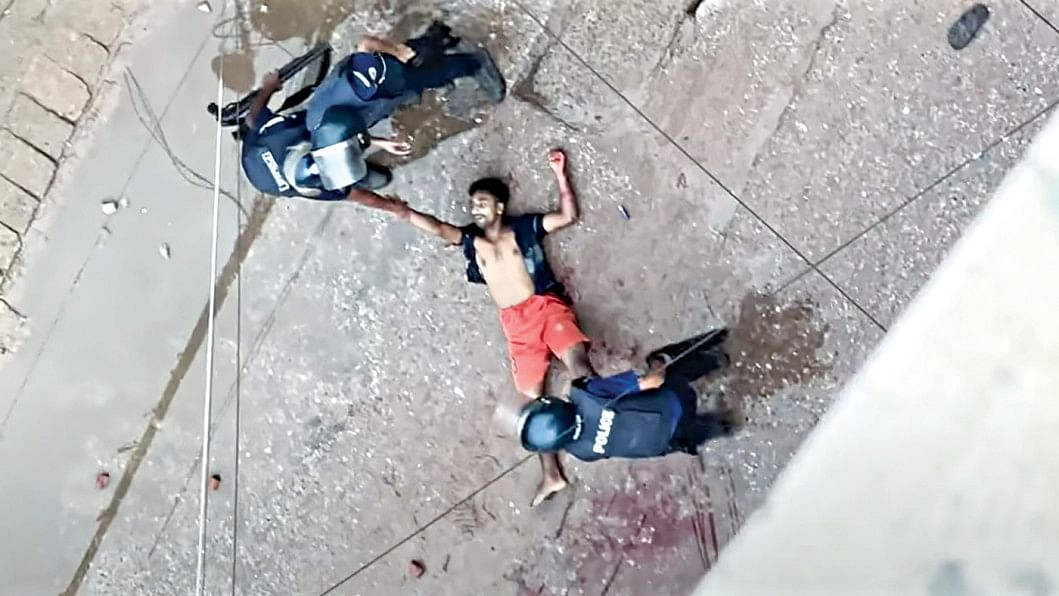
On the afternoon of August 5, 2024, word spread across the country that Sheikh Hasina fled to India. In Gazipur, like elsewhere in the country, thousands poured into the streets in celebration. But there was also anger.
A group of protesters started chanting slogans outside Konabari Police Station, and the police opened fire. The protesters dispersed, but the cops kept hunting them down in nearby alleys.
Md Ridoy, 20, a student and an autorickshaw driver, found himself trapped in one such alley. The cops cornered him, dragged him onto the main road, right in front of Shareef General Hospital, according to authenticated video footage seen by The Daily Star.
Six officers closed in–one raised a stick, another held onto his shirt so he could not escape. Meanwhile, a third, later identified as Constable Akram, slowly stepped behind him with a gun in hand, like a predator marking its prey. Another cop slapped him. Simultaneously, Akram put the gun in his back and then pulled the trigger!
Ridoy collapsed, but the 20-year old was still breathing. The cops walked away as Ridoy bled profusely.
Minutes later, three officers returned, and carried him behind the police lines from where they were still firing at protesters. From there, three others, one in uniform and another in civilian clothing, dragged him towards an alley which leads straight to the Konabari Police Station. Ridoy is never seen again.
The International Truth and Justice Project, an organisation documenting crimes against humanity, has also investigated this incident.
"We went to the Konabari Police Station the next day. All we could find was the lungi Ridoy was wearing underneath a desk," said Md Ibrahim, Ridoy's brother-in-law.
This newspaper found another video from the night of August 5, 2024, which shows the inside of the Konabari Police Station. Some policemen were seen making preparations to leave. In the video was a man wearing a white sleeveless undershirt and a lungi. Ridoy's relatives and locals identified him as Abed Ali, a trader.
According to Ibrahim and five locals, Abed helped the cops in disposing of Ridoy's body. Abed Ali could not be reached for comment.
Seven months on, Ridoy's family does not know where his body is. His name is not on the list of July martyrs prepared by the government, and his family is yet to receive any compensation from the government, his sister Jesmin Akhter said.
Five policemen, including Constable Akram and former Gazipur Detective Branch inspector Mohammad Shafiqul Islam, have since been arrested over Ridoy's killing. The case now sits before the International Crimes Tribunal.
A MASSACRE
As Ridoy bled out in Gazipur, a massacre unfolded in Savar's Ashulia.
Since the morning of August 5, Sheikh Hasina's final day in power, police were shooting relentlessly, blocking protesters from marching to Dhaka. Bodies were dropping one after another, blood soaking the streets.
A video that later emerged shows six bodies, bloodstained and barely covered, lying stacked on a van in front of Ashulia Police Station. One man was still moving and breathing, his fingers twitching.
In the video, later authenticated by fact checkers, Dhaka District Detective Branch Inspector Arafat Hossain is seen walking past. Beside him stands Masudur Rahman, officer-in-charge of Ashulia Police Station.
Then—flames. The bodies burn.
At least one of these victims, the one who was still seen moving and breathing, was certainly burned alive. Their remains were subsequently dumped in Ambagan graveyard, next to the police station.
The next day, the graves were opened, and six charred bodies were pulled from the earth. Families identified four of them–Ash-Sabur, Sazzad Hossen Sajal, Tanjil Ahmed Sujoy, and Baygid Bostame. Their faces barely recognisable, some were identified only by their clothes and identity cards.

The remaining two bodies are completely unrecognisable and have been sent for DNA profiling after families contacted police, said Kamal Hossen, inspector (investigation) of Ashulia Police Station.
The International Crimes Tribunal is now investigating this case. DB Inspector Arafat Hossain and ex-additional SP of Dhaka Abdullahil Kafi have been arrested over this incident.
The attempted cover-up in Gazipur and Savar is only the tip of the iceberg.
The UN report on the July uprising says that there are cases where "police collected bodies of unidentified victims, and it is unclear to what extent the bodies were later handed over to morgues and duly reported to health authorities."
About the burning of bodies, the report says that police did so to "create the false impression that the victims had been killed by protesters."
Meanwhile, at least 5 protesters from Savar still remain missing. Tamim Sikder, Moniruzzaman Milon, Omor Faruk and Abul Hossen went missing on August 5 from near Ashulia police station. Shahadat Hossain, a day labourer, remains missing since August 4, fellow protesters and family members said.
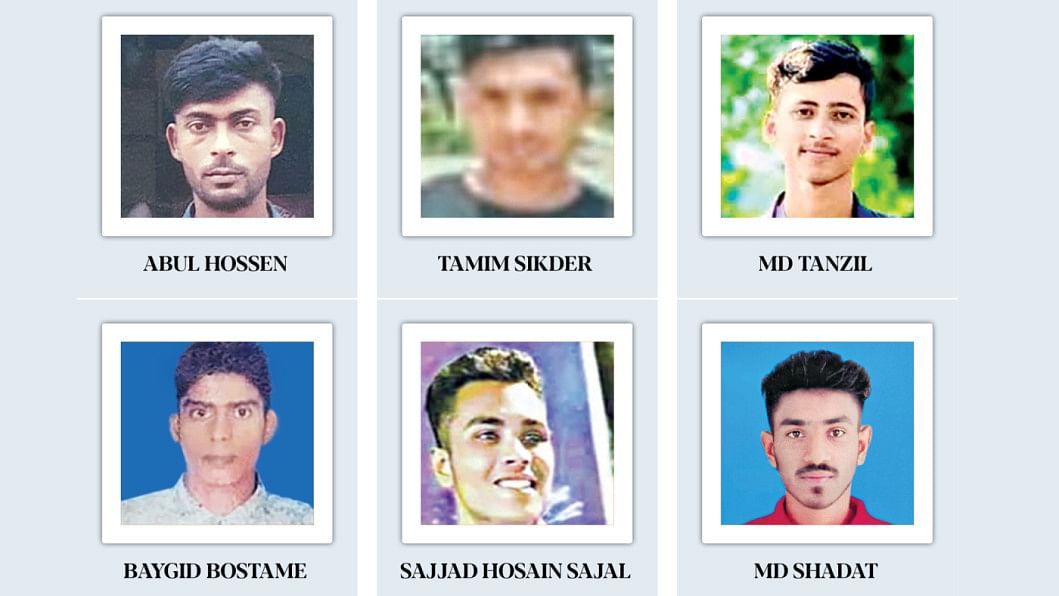
FAMILIES DENIED TIME TO FIND BODIES
Sohel Rana, 28, went missing on July 18 near Jatrabari. His younger brother, Md Nabil, stepped out the next morning to look for him but could not go far. Jatrabari was a warzone.
The government enforced a countrywide curfew that night, and the internet had been shut down.
Nabil still went out the next morning again to search for his brother, but got assaulted by the cops. He finally found his way inside Dhaka Medical College Hospital on July 21, risking his life amid curfew.
"There were bodies stacked on top of each other. Each freezer had two bodies in it," he said.
But he could not find his brother among so many bodies. Nabil returned to DMCH and visited Anjuman Mufidul Islam, a burial service, multiple times before August 5, but found no luck.
"We went to the Konabari Police Station the next day. All we could find was the lungi Ridoy was wearing underneath a desk,"
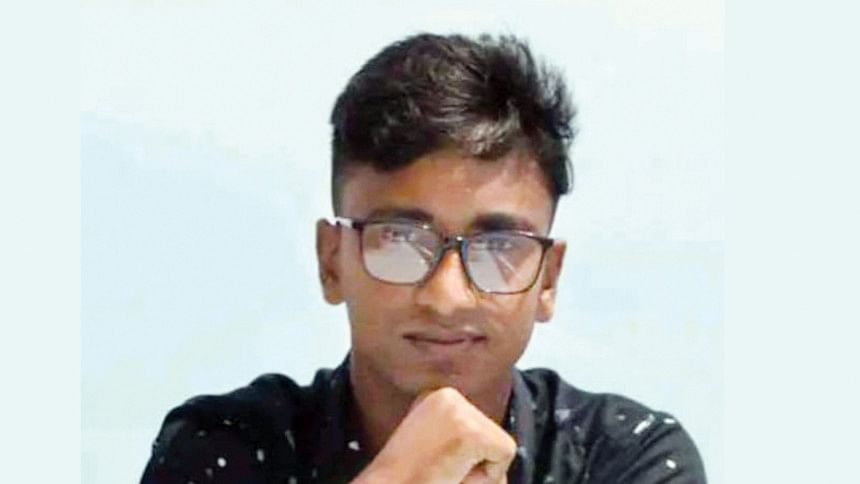
Sixteen days after Sheikh Hasina's fall and 34 days after Sohel disappeared, Nabil found his brother's photograph at DMCH on August 21. Later, he rushed to Anjuman only to find that his brother, along with eight others, was buried at an unmarked grave in Rayerbazar [Read more in Part 1] on July 24.
The Daily Star has tracked down the unnamed General Diary that Shahbagh police filed for Sohel. It states that Sohel was shot during protests in Jatrabari's Kajla area and died while receiving treatment at Dhaka Medical's emergency ward on July 18.
We also obtained Sohel Rana's inquest report. It says he died from multiple pellet wounds near the chest. Bruises on his back and other parts suggested possible torture before death.
Meanwhile, Md Assadullah, a 30-year-old private car driver, left his Uttara home after lunch on July 19. He was shot on Road 2 of Uttara's Sector 7.
Video footage verified by this newspaper shows Turag Thana Chhatra League Vice-President Murtafa Bin Omar, alias Sathil, wielding a shotgun, firing indiscriminately at protesters in Uttara that day.
With him were Jubo League leader Sohel Rana, councillors Yuvraj and Naim, and Yuvraj's son Leon, according to protesters, locals and the July Revolutionary Alliance, a student platform documenting the massacre.
Several shots, fired by Sathil, hit Assadullah, according to three protesters and the CCTV footage seen by The Daily Star.
Assadullah's family received a call from a protester that night saying he had been shot.
The curfew had already been announced. The next morning, his wife Farjana Akter went to Uttara Crescent Hospital and then DMCH to find him.
When she was looking for her husband in the morgue, emergency section, and other wards of DMCH, Assadullah was still alive. He was receiving treatment at the hospital's burn unit, according to CCTV footage seen by this newspaper.
There, lying in a bed, he took his last breath on July 22. Two days later, he was buried at Rayerbazar in an unmarked grave. Meanwhile, Farjana kept looking.
Sathil faces at least 11 cases over murder during the July uprising, locals and police sources said. Sathil and the rest of the AL activists seen in the video are now on the run, and could not be contacted for comment.
On July 19, the same day Assadullah was shot, Faisal vanished from Uttara, and Rafiqul from Gopibagh. They too, were buried in Rayerbazar on July 24 as unclaimed bodies.
A request for burial sent to Anjuman from Shahbagh police station, along with pictures of the bodies, writes, "As no one claimed these individuals, we are handing over the bodies to Anjuman Mufidul Islam for burial."
But the fact is, families were still looking for their loved ones–they only did not know where to find them.
[Our Savar Correspondent Aklakur Rahman Akash and Tangail Correspondent Mirza Shakil Contributed to this report]
Part- 4
Families want closure, however painful

When we first started visiting Dhaka Medical College Hospital in January for this story, there were seven protest-related unclaimed bodies freezing in its mortuaries. One of them, Md Hasan, a teenage trader from Gulistan, was handed over to his family on February 14 after DNA tests. The remaining six are still stored at DMCH morgue, growing colder.
Hasan's father, Md Monir Hossain, had searched for his son everywhere -- hospitals, clinics, cemeteries, and even Anjuman Mufidul Islam since his son went missing on August 5, 2024, the day Sheikh Hasina fell and fled the country.
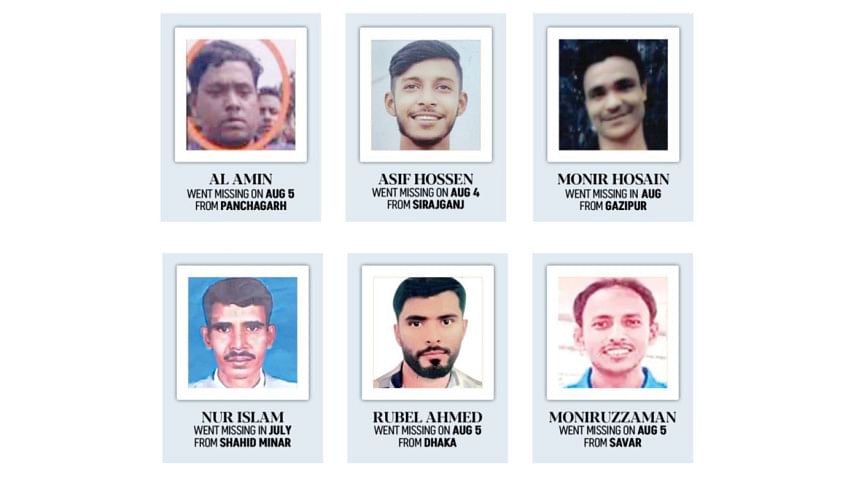
"To exhume bodies from graves, the request needs to come from the relevant police stations based on cases filed in connection to the incidents. We did not receive any such request from the police stations either."
"After four months, student leaders told me about the seven bodies at Dhaka Medical. I identified my son from his clothing. He always wore white."
Md Sogir from Sylhet believes his son, Md Waliullah, 25, a trader from Elephant Road in the capital, is also among the bullet-ridden bodies in the DMCH mortuary.
"My son went missing in July. I looked for him for five months. The bodies are barely recognisable, but I identified my son through an old surgery mark on his right leg."
Sogir has given his DNA sample to the Criminal Investigation Department of police and is awaiting confirmation.
"Even if the identities of the unclaimed bodies are found, detection of the graves is challenging because they were buried collectively. There's no way of knowing who was buried where."
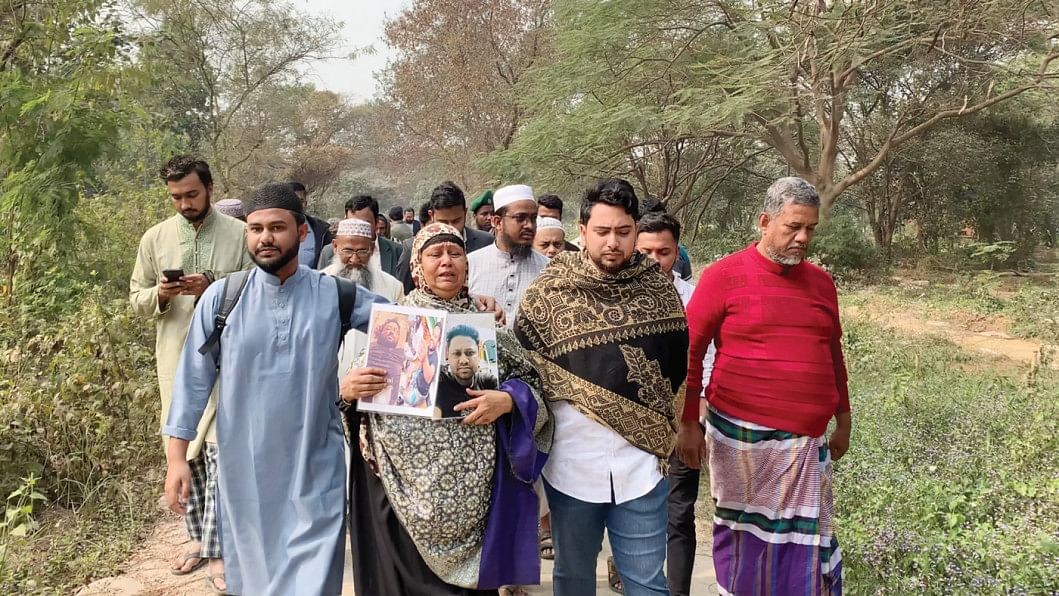
A SYSTEM FAILING THE VICTIMS
If the sample does not match and if no one comes looking for the rest of the bodies still freezing at DMCH, these men, who were once someone's family, will likely be buried as "nobodies" in unmarked graves like many others (read more in Part 1).
On January 25, 2025, former information adviser Nahid Islam visited the Rayerbazar graveyard to pay tribute to the unidentified martyrs of the July uprising. There, Nahid, currently the leader of National Citizen Party, assured the families of these victims that efforts to identify those buried in unmarked graves had begun.
Nahid along with other student leaders visited the graveyard again on March 4 after the launch of the new party, and reiterated their commitment to identifying the graves of the unclaimed bodies.
In reality, however, the process remains stuck in red tape.
In November last year, the July Uprising Cell under the health ministry gave families only a 12-day window to report missing persons, posting an obscure notice on a barely visible website. The Cell claims it did not receive any missing reports yet.
However, not a single of the 31 families we spoke to knew about this notice or the newspaper advertisements published by the cell. They don't even know where the office is.
Mahbub Ullah Mazumder, senior assistant secretary of July Foundation, has made a list of the six that this investigation confirmed to have been buried in Rayerbazar and one missing protester from Anjuman documents. After Mahbub shared the list with the cell, it only sent a letter to relevant ministries for actions.
Three government officials working on the July Uprising Cell said the health ministry is working to identify the missing bodies "very seriously" and asked The Daily Star to call health Secretary Md Saidur Rahman, who in turn advised us to contact Joint Secretary Dr SM Mustafizur Rahman.
The joint secretary said the ministry sent a letter to the deputy commissioner's office to take action. Dhaka DC Tanvir Ahmed said they did not receive the letter yet.
"To exhume bodies from graves, the request needs to come from the relevant police stations based on cases filed in connection with the incidents. We did not receive any such request from the police stations either," Tanvir added.
As the process remains stuck in the labyrinth of paper works involving a complex network of multiple government agencies, families of Sohel Rana, Faisal Sarker, Md Assadullah, Rafiqul Islam, Mahin Mia, Ahmed Jilani, and many other victims of the July massacre who remain missing, continue to look for answers.
They want to know where exactly their loved ones lie among the 114 buried in Block 4 of Rayerbazar. These graves, each marked solely by a bamboo pole, leave the families with no way of knowing that. Meanwhile, rain has flattened the graves, and the bamboo markers are rotting.
If a GD number, a photo, a birthmark, age, clothing or any previous injury marks had been placed on the bamboo pole before burying the unclaimed bodies, identifying them would have been easier. Now, if any relative claims a body, all the corpses would need to be exhumed for DNA profiling.
"Even if the identities of the unclaimed bodies are found, detection of the graves is challenging because they were buried collectively. There's no way of knowing who was buried where," said Kamrul Ahmed, head of Anjuman Mufidul Islam's burial service, who oversaw the burial of many July massacre victims.
Prof Kamrul Islam Sardar, who served as a forensic head at some of the top hospitals, said even if DNA samples were collected from every unclaimed body, they are now useless since the graves are unmarked.
"All the bodies would need to be exhumed for new DNA samples, and this would then need to be matched with relatives. This is a very complicated process which might take years if effective steps are not taken by the government to expedite the process," he added.
Only six families among the many families know that their kin have been buried in Rayerbazar.
One reason behind this is that many of the families we spoke to do not even know that places like Anjuman Mufidul or Rayerbazar exist. They tried to rely on the police, who, in many cases, offered little help.
Ahmad Ferdous, head of CID's Forensic DNA Laboratory, said they completed 11 DNA profiling of as many victims related to the uprising. Of them, five bodies have been handed over to family members after the samples matched. The rest six remain unidentified as there are no claims for these bodies.
DNA profiling for 10 more bodies connected to the uprising is currently underway, Ferdous added.
Meanwhile, many families continue to gather at Dhaka Medical College morgue every day to find their fathers, sons, brothers or husbands among the six uprising-linked bodies still lying unclaimed there.
Rasheda Begum, mother of Sohel Rana who was killed in police shooting and buried at Rayerbazar as an unclaimed body, keeps visiting Block 4 of the cemetery with teary eyes.
"Which one is my son's grave?" she asks anyone who would listen.
The families of Ridoy, Miraj, Maruf and many others want to know if they are dead or alive.
For these families, uncertainty overshadows the agony of their loss. They now want closure, however painful.
Assadullah's widow Farjana Akter is tormented every day as she cannot console her two children, aged ten and four.
"My children keep asking where their father's grave is. Since I cannot bring their father back alive, I at least want to show them where he rests, so they can have a place to grieve and remember him."
[Our correspondents from Gazipur, Bogura, Pabna and Thakurgaon contributed to this story.]
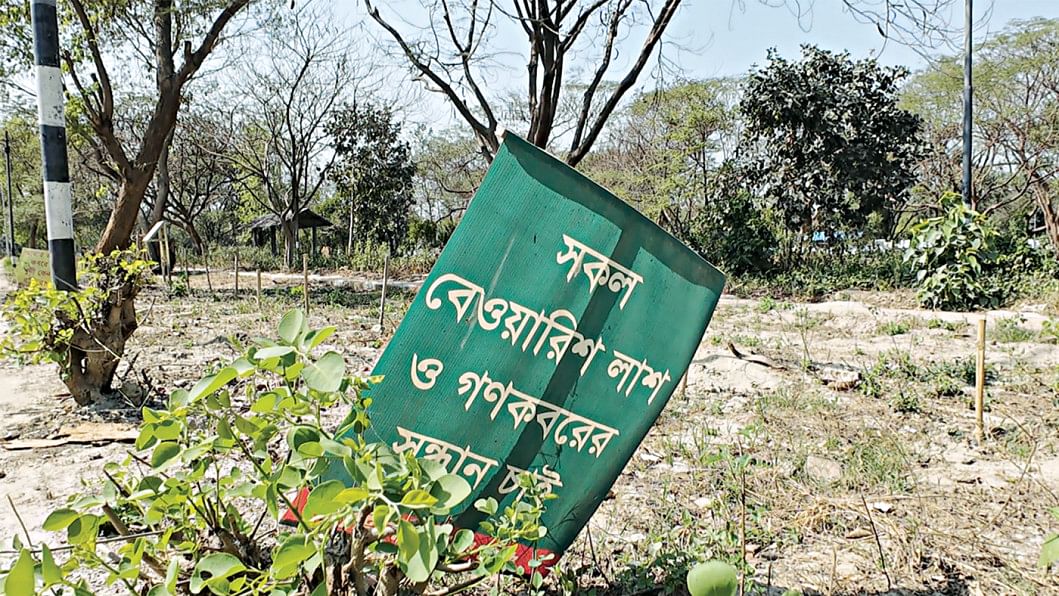
WHERE ARE THEY?
Sohel Sheikh joined a victory procession on August 5 after Hasina fled the country. He headed for Gono Bhaban, the official residence of the deposed prime minister, like tens of thousands of others.
By 6:00pm, his wife, Ayesha Akhter, got a call—Sohel had been shot in front of Uttara East Police Station. Over a dozen died there as police opened fire on protesters trying to storm in. The caller told Ayesha that Sohel Sheikh was being taken to Crescent Hospital in Uttara.
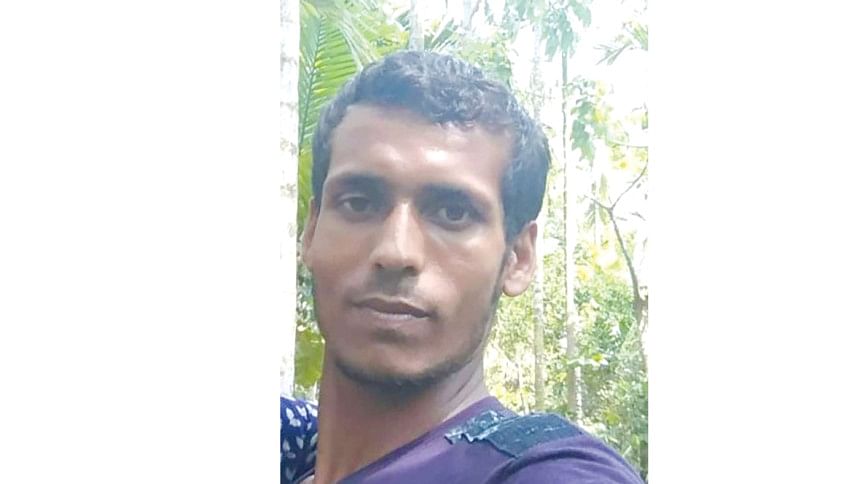
Defying the curfew, she came to Dhaka from Pirojpur, rented a house for two months and looked for her husband at Crescent and Dhaka Medical, but did not find him.
Her initial attempt to file a case was also stalled by officers. Uttara East police eventually recorded a missing diary instead of a case and told her to omit that her husband was shot. Ayesha has no updates about the investigation.
"I abandoned all hopes. I took out loans to stay in Dhaka and find him. No one helped me. I now live in Pirojpur with my in-laws," Ayesha said.
The Daily Star spoke to the person who called Ayesha on August 5. He and multiple witnesses said Sohel Sheikh was shot. No one knows what happened next.
Shahidul Islam Miraj was enraged after watching the video of the police shooting of Abu Sayed on July 16. He shared the video and wrote several Facebook posts, and joined the protest the next day. His social media shows he was active in Jatrabari-Shonir Akhra area since July 17.

His elder brother, Saiful Islam Mithil, warned him and asked him to stay home until normalcy returns. On July 27, Miraj left without telling his brother, and never came back.
At least five protesters said they saw him at Jatrabari Police Station on August 5, but we could not independently verify this. That day, Jatrabari police killed protesters one after another like targets in a video game.
For six months, Mithil looked for his brother in morgues, police stations, Anjuman Mufidul Islam and Rayerbazar graveyard. He just wants to know whether his brother is dead or alive.
HSC examinee Md Maruf, 17, went missing from Dhaka's Mirpur on July 20. That was the first full day of the curfew.
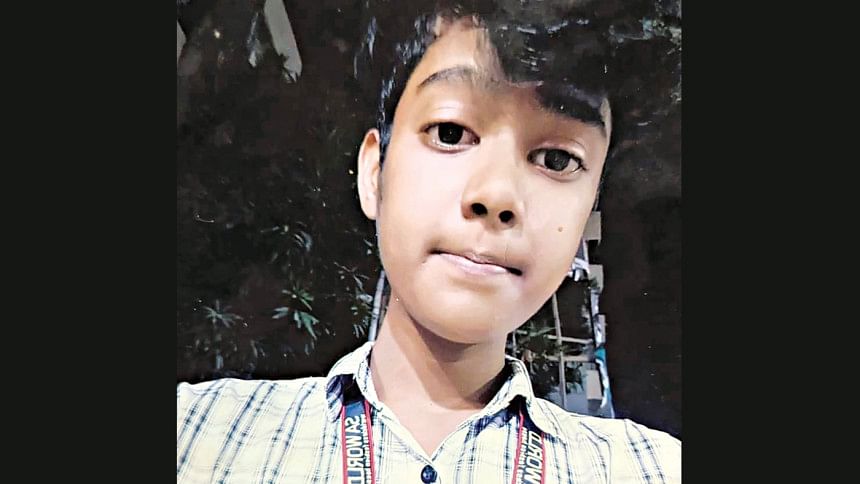
Since August 5, his mother, Moushumi Akter, has gone to the police station multiple times. But the police did not provide her with any assistance. Nearly four months after the incident, in November, Rupnagar Police Station finally agreed to file a general diary (GD).
Moushumi, a domestic worker by profession, repeatedly pleaded with the police for help in finding her son. But the police always had the same response—"It will take time."
Six months after the incident, in January, the police agreed to file a case. However, soon after, they informed Moushumi that her son had died by suicide. The police provided no evidence or the whereabouts of Maruf's body to support this claim.
When we asked Investigating Officer Md. Ibrahim of Mirpur's Rupnagar Police Station on what basis he claims that Maruf died by suicide, he shrugged. "I don't even know who Maruf is."
Correction
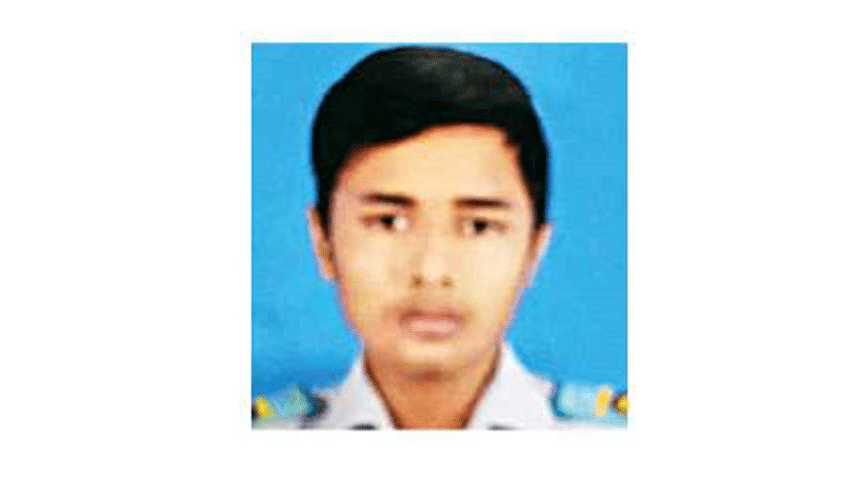
In our story titled "The Disappeared of the July Uprising: Families Want Closure, However Painful" published on March 16, 2025, we ran a photo of Ishtiak Hasan, a college student from Bogura, and said he remains unaccounted for since August. He had indeed remained missing for a few days at the time, but has since returned home. We apologise for failing to provide the updated information.
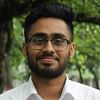
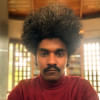
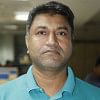
 For all latest news, follow The Daily Star's Google News channel.
For all latest news, follow The Daily Star's Google News channel. 



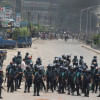

Comments